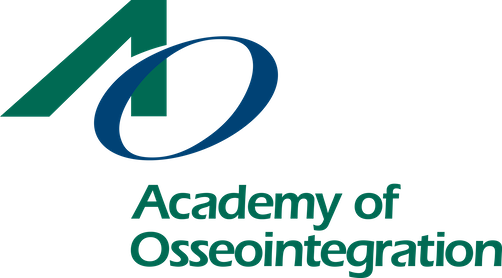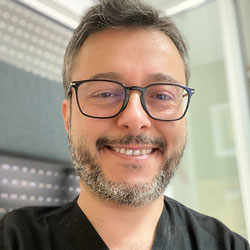-
 Edward Shih-Chang Tseng, DDS, MS This lecture will introduce the biologic classification of soft tissue graft briefly and then highlight the clinical applications of connective tissue graft to enhance esthetics, increase keratinized tissue and prevent /correct the mucosal recession around the dental implant. The principles, procedures and technique notes of applying the connective tissue graft in implant dentistry will be addressed via not only clinical slides but also surgical clips and animations. Recorded - November 18, 2021
Edward Shih-Chang Tseng, DDS, MS This lecture will introduce the biologic classification of soft tissue graft briefly and then highlight the clinical applications of connective tissue graft to enhance esthetics, increase keratinized tissue and prevent /correct the mucosal recession around the dental implant. The principles, procedures and technique notes of applying the connective tissue graft in implant dentistry will be addressed via not only clinical slides but also surgical clips and animations. Recorded - November 18, 2021 -
 Shih-Cheng Wen, DDS, MS Dental implant surgery has become a modern science and adjusting the occlusion of the implant restoration is one of the important factors to avoid the complications of dental implants. This presentation will share some literature on the subject of dental implant occlusion. Recorded - October 14, 2021
Shih-Cheng Wen, DDS, MS Dental implant surgery has become a modern science and adjusting the occlusion of the implant restoration is one of the important factors to avoid the complications of dental implants. This presentation will share some literature on the subject of dental implant occlusion. Recorded - October 14, 2021 -
 Tara Aghaloo, DDS, MD, PhD Dental implants are a known and predictable treatment option for missing teeth, where most patients today desire this therapy. Although implant survival is extremely high, these favorable outcomes depend greatly on proper case selection, minimizing medical risk factors, careful surgical and prosthetic execution, and prevention and management of complications. In clinical practice, patient demands are becoming more difficult to meet, where they often seek immediate implants with immediate function. This leaves the practicing clinician with a dilemma of meeting patient expectations, but often without scientific evidence for our treatment protocols. This presentation will update the practicing dentist on achieving the most ideal and successful implant outcomes, improving case presentations, obtaining increased case selection, and avoiding and managing complications. Recorded - June 5, 2021
Tara Aghaloo, DDS, MD, PhD Dental implants are a known and predictable treatment option for missing teeth, where most patients today desire this therapy. Although implant survival is extremely high, these favorable outcomes depend greatly on proper case selection, minimizing medical risk factors, careful surgical and prosthetic execution, and prevention and management of complications. In clinical practice, patient demands are becoming more difficult to meet, where they often seek immediate implants with immediate function. This leaves the practicing clinician with a dilemma of meeting patient expectations, but often without scientific evidence for our treatment protocols. This presentation will update the practicing dentist on achieving the most ideal and successful implant outcomes, improving case presentations, obtaining increased case selection, and avoiding and managing complications. Recorded - June 5, 2021 -
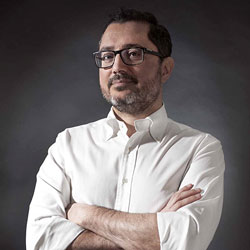 Luigi Canullo, DDS, PhD Recently published Literature showed that interactions between soft tissues and a foreign body, like an abutment, was mediated by the abutment material features and the tissue characteristics, so far defined only using the biotype. However, once analyzed in detail the soft tissue adaptation to the abutment, different variables were demonstrated to simultaneously interact in this scenario. In fact, the soft tissue expression appeared to depend not only on the histologic characteristics but mostly on the individual inflammatory and regenerative patterns (epigenetics). At the same time, the prosthetic work flow was also demonstrated to influence the healing displays, as well as the abutment surface features, which could be didactically summarized using a macro-, micro- and nano- scale. In fact, while a narrower macro morphology was clearly associated to a better bone level maintenance and better esthetic outcomes, moderately rough microtopography was shown to enhance the connective/metallic adhesion. An even more magnified capture of the situation revealed that more hydrophilic and more decontaminated surfaces presented a stronger tissue/metallic adhesion, correlated to a consequent positive impact on bone level changes. Finally, last but not least parameter, in a microbiological contaminated environment like the oral cavity, microbiological colonization of the abutment surface was shown to influence the soft tissue/foreign body interaction. Recorded - April 13, 2021
Luigi Canullo, DDS, PhD Recently published Literature showed that interactions between soft tissues and a foreign body, like an abutment, was mediated by the abutment material features and the tissue characteristics, so far defined only using the biotype. However, once analyzed in detail the soft tissue adaptation to the abutment, different variables were demonstrated to simultaneously interact in this scenario. In fact, the soft tissue expression appeared to depend not only on the histologic characteristics but mostly on the individual inflammatory and regenerative patterns (epigenetics). At the same time, the prosthetic work flow was also demonstrated to influence the healing displays, as well as the abutment surface features, which could be didactically summarized using a macro-, micro- and nano- scale. In fact, while a narrower macro morphology was clearly associated to a better bone level maintenance and better esthetic outcomes, moderately rough microtopography was shown to enhance the connective/metallic adhesion. An even more magnified capture of the situation revealed that more hydrophilic and more decontaminated surfaces presented a stronger tissue/metallic adhesion, correlated to a consequent positive impact on bone level changes. Finally, last but not least parameter, in a microbiological contaminated environment like the oral cavity, microbiological colonization of the abutment surface was shown to influence the soft tissue/foreign body interaction. Recorded - April 13, 2021 -
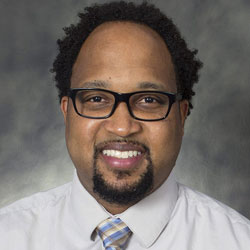 Darnell Kaigler, DDS, MS, PhD Current treatment modalities to restore oral tissues and teeth provide functional and structural restoration of the compromised or lost tissues; yet, many of these approaches do not meet the need for more biologic and physiologic treatment outcomes. The emergence of tissue engineering and regenerative medicine over the past 25 years has been a gateway to new paradigms of treatment in dentistry, particularly for periodontal, peri-implant, and alveolar bone regeneration. Historically, the use of different biomaterials and grafting agents has established a strong platform for the development of therapeutic concepts toward achieving “true“ tissue regeneration. More recently, the use of biologic agents and the advent of cell therapies has enabled an even greater capacity to achieve regeneration in more complex and compromised clinical scenarios. This course will provide an overview of the evolution of stem cell therapeutic approaches in dentistry and highlight current applications for periodontal, peri-implant, and alveolar bone regeneration using stem cells. Key regenerative principles will be discussed and clinical cases will be presented demonstrating how these strategies can be implemented in clinical practice. Recorded - May 25, 2021
Darnell Kaigler, DDS, MS, PhD Current treatment modalities to restore oral tissues and teeth provide functional and structural restoration of the compromised or lost tissues; yet, many of these approaches do not meet the need for more biologic and physiologic treatment outcomes. The emergence of tissue engineering and regenerative medicine over the past 25 years has been a gateway to new paradigms of treatment in dentistry, particularly for periodontal, peri-implant, and alveolar bone regeneration. Historically, the use of different biomaterials and grafting agents has established a strong platform for the development of therapeutic concepts toward achieving “true“ tissue regeneration. More recently, the use of biologic agents and the advent of cell therapies has enabled an even greater capacity to achieve regeneration in more complex and compromised clinical scenarios. This course will provide an overview of the evolution of stem cell therapeutic approaches in dentistry and highlight current applications for periodontal, peri-implant, and alveolar bone regeneration using stem cells. Key regenerative principles will be discussed and clinical cases will be presented demonstrating how these strategies can be implemented in clinical practice. Recorded - May 25, 2021 -
 Luca Fiorillo, DDS, PhD, MSc Nowadays, dental implantology represents the gold standard in oral rehabilitation, simple or complex. The high predictability over time, and the related techniques to allow the possible rehabilitations are increasingly simple and feasible for the clinician. All this is guaranteed thanks to the presence of new biomaterials, starting from the implant surfaces and their primary or secondary geometries, to arrive at all the biomaterials related to the regeneration and maintenance of peri-implant tissues. The new challenge for the clinician concerns the possibility of keeping these tissues healthy and limiting implant complications, including peri-implantitis. Recorded - August 10, 2021
Luca Fiorillo, DDS, PhD, MSc Nowadays, dental implantology represents the gold standard in oral rehabilitation, simple or complex. The high predictability over time, and the related techniques to allow the possible rehabilitations are increasingly simple and feasible for the clinician. All this is guaranteed thanks to the presence of new biomaterials, starting from the implant surfaces and their primary or secondary geometries, to arrive at all the biomaterials related to the regeneration and maintenance of peri-implant tissues. The new challenge for the clinician concerns the possibility of keeping these tissues healthy and limiting implant complications, including peri-implantitis. Recorded - August 10, 2021 -
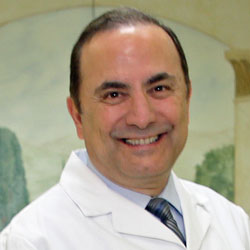 Tony Daher, DDS, MSEd The All-On-X prosthesis is a “popular” option for the treatment of completely edentulous arches with attractive esthetic and functional results. Attractive esthetic and functional results are the results of a well-fabricated presurgical “All-On-Non” Removable Complete Dentures. This concept uses X number of dental implants that are biomechanically positioned for maximum stability of the implant prosthesis. The All-On-X prosthesis concept continued, for many years now, to be a reliable and has a predictable high success rate. The final prosthesis can be made in various grades of laboratory materials from acrylic to metallo-ceramic to Zirconia, always with the same attention to esthetic and functional details. With the use of slides and videos, the presentation will cover many clinical tips needed for a predictable outcome using the All-On-X concept. Recorded - July 14, 2021
Tony Daher, DDS, MSEd The All-On-X prosthesis is a “popular” option for the treatment of completely edentulous arches with attractive esthetic and functional results. Attractive esthetic and functional results are the results of a well-fabricated presurgical “All-On-Non” Removable Complete Dentures. This concept uses X number of dental implants that are biomechanically positioned for maximum stability of the implant prosthesis. The All-On-X prosthesis concept continued, for many years now, to be a reliable and has a predictable high success rate. The final prosthesis can be made in various grades of laboratory materials from acrylic to metallo-ceramic to Zirconia, always with the same attention to esthetic and functional details. With the use of slides and videos, the presentation will cover many clinical tips needed for a predictable outcome using the All-On-X concept. Recorded - July 14, 2021 -
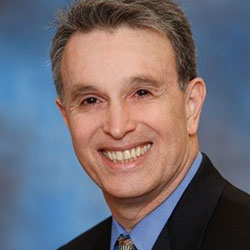 Robert Lemke, DDS, MD This presentation will review the biology of pain in the human body, history of pain management and available pain management options along with how each one affects the human body differently. I will also discuss the pharmacology of opioids and warning signs in patients that may be seeking opioids. The effects of an opioid addiction will also be discussed. Recorded - April 27, 2021
Robert Lemke, DDS, MD This presentation will review the biology of pain in the human body, history of pain management and available pain management options along with how each one affects the human body differently. I will also discuss the pharmacology of opioids and warning signs in patients that may be seeking opioids. The effects of an opioid addiction will also be discussed. Recorded - April 27, 2021 -
 Setareh Lavasani, DDS, MS This presentation is an interactive and comprehensive update in 2D and 3D CBCT radiographic interpretation. It focuses on the importance of developing an analytical strategy to systematically review different types of dental images. The importance of “pattern recognition” to differentiate between different jaw pathologies; inflammatory, benign, malignant and fibrou-osseous lesions with clinical cases will be discussed. An overview of possible differential diagnosis for paranasal sinuses opacifications and head and neck soft tissue calcifications are reviewed. Recorded - August 19, 2021
Setareh Lavasani, DDS, MS This presentation is an interactive and comprehensive update in 2D and 3D CBCT radiographic interpretation. It focuses on the importance of developing an analytical strategy to systematically review different types of dental images. The importance of “pattern recognition” to differentiate between different jaw pathologies; inflammatory, benign, malignant and fibrou-osseous lesions with clinical cases will be discussed. An overview of possible differential diagnosis for paranasal sinuses opacifications and head and neck soft tissue calcifications are reviewed. Recorded - August 19, 2021 -
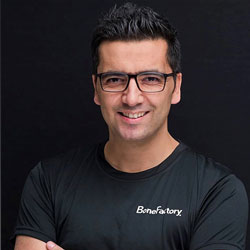 Şerif Küçük, MSc This presentation will review current concepts in implantology-augmentative techniques including:
Şerif Küçük, MSc This presentation will review current concepts in implantology-augmentative techniques including:-
- The Biological Concepts of Bone Augmentation and the Split Bone Block Technique by Professor Fouad Khoury;
-
- utilizing bone chips in the retromolar for safe bone harvesting
-
- discussion of the external oblique line-up and advanced bone augmentation in complex cases.
-
-
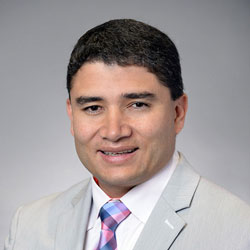 Emilio Arguello, DDS, MS This lecture will focus on the different models for successful management and integration of work-flows between a private practice versus a multi practice models. As well as the understanding of the common goals to maximize earning potential that can be achieved in both models from the practitioner’s point of view. Recorded - November 3, 2021
Emilio Arguello, DDS, MS This lecture will focus on the different models for successful management and integration of work-flows between a private practice versus a multi practice models. As well as the understanding of the common goals to maximize earning potential that can be achieved in both models from the practitioner’s point of view. Recorded - November 3, 2021 -
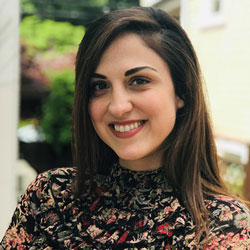 Despoina Bompolaki, DDS, MS Dental implants have become a widely accepted, sought-after treatment option for replacing missing teeth. Favorable treatment outcomes depend on proper planning and execution, from both a restorative and a surgical perspective. This lecture will go well beyond the basics of restoring dental implants: achieving predictable esthetic outcomes when restoring anterior implants; capturing accurate impressions in multiple implant cases; identifying proper componentry for existing implants; recognizing and addressing common prosthetic complications; and most of all, supporting clinical decisions with scientific evidence. Recorded - November 20, 2021
Despoina Bompolaki, DDS, MS Dental implants have become a widely accepted, sought-after treatment option for replacing missing teeth. Favorable treatment outcomes depend on proper planning and execution, from both a restorative and a surgical perspective. This lecture will go well beyond the basics of restoring dental implants: achieving predictable esthetic outcomes when restoring anterior implants; capturing accurate impressions in multiple implant cases; identifying proper componentry for existing implants; recognizing and addressing common prosthetic complications; and most of all, supporting clinical decisions with scientific evidence. Recorded - November 20, 2021 -
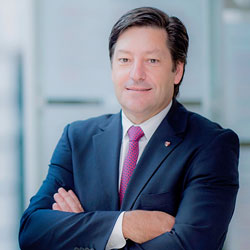 German Gallucci, DMD, PhD During this lecture, clinical considerations and indications for dental implants will be analyzed in the context of their direct application to esthetic implant-prosthetic rehabilitations. Risk assessment, treatment planning, surgical protocols and esthetic/prosthodontic rehabilitations will be discussed in detail according to different clinical situations. Recommended planning steps and treatment procedures will be presented through scientific evidence. Modern Implant-prosthetic restorations using different implant designs and digital technology call for a harmonious esthetic integration with the pre-existing environment. A scalloped gingival line with distinct papillae and free of any abrupt vertical differences in clinical crown length between anterior implants, is paramount. In this context, biologic considerations affecting normal peri-implant soft tissue integration will be discussed as a major esthetic parameter. Recorded - July 17, 2021
German Gallucci, DMD, PhD During this lecture, clinical considerations and indications for dental implants will be analyzed in the context of their direct application to esthetic implant-prosthetic rehabilitations. Risk assessment, treatment planning, surgical protocols and esthetic/prosthodontic rehabilitations will be discussed in detail according to different clinical situations. Recommended planning steps and treatment procedures will be presented through scientific evidence. Modern Implant-prosthetic restorations using different implant designs and digital technology call for a harmonious esthetic integration with the pre-existing environment. A scalloped gingival line with distinct papillae and free of any abrupt vertical differences in clinical crown length between anterior implants, is paramount. In this context, biologic considerations affecting normal peri-implant soft tissue integration will be discussed as a major esthetic parameter. Recorded - July 17, 2021 -
 Dan Holtzclaw, DDS, MS Although they have been in use for over 50 years, pterygoid dental implants are one of the least understood styles of dental implant treatment. This may be due to the fact that pterygoid implants are widely considered to be one of the most difficult fixtures to place in all of implant dentistry. In this webinar, Dr. Dan Holtzclaw details his experience utilizing pterygoid implant in hundreds of full arch immediate load cases. Recorded - September 1, 2021
Dan Holtzclaw, DDS, MS Although they have been in use for over 50 years, pterygoid dental implants are one of the least understood styles of dental implant treatment. This may be due to the fact that pterygoid implants are widely considered to be one of the most difficult fixtures to place in all of implant dentistry. In this webinar, Dr. Dan Holtzclaw details his experience utilizing pterygoid implant in hundreds of full arch immediate load cases. Recorded - September 1, 2021 -
 Robert Lemke, DDS, MD In implant dentistry, details count…they can add up to success, or to failure. Experienced surgeons rely on a system to ensure that all details are addressed in a methodical manner, so that none are overlooked. This course will help you to create a system that includes site analysis, preoperative medications, nuances in surgical procedures, and more for predictable success in implant surgery. Recorded - December 11, 2021
Robert Lemke, DDS, MD In implant dentistry, details count…they can add up to success, or to failure. Experienced surgeons rely on a system to ensure that all details are addressed in a methodical manner, so that none are overlooked. This course will help you to create a system that includes site analysis, preoperative medications, nuances in surgical procedures, and more for predictable success in implant surgery. Recorded - December 11, 2021 -
 Andrea Ravidà, DDS During the last decade, short implants (≤6mm) have been shown to be a reliable and effective solution for patients with posterior bone atrophy. This presentation will explore in detail the scientific literature on short implants, providing evidence-based guidelines for clinicians concerning their use. Furthermore, the benefits and disadvantages of short implants in comparison to bone regenerative therapies in conjunction with standard length implant placement will be discussed. Recorded - October 20, 2021
Andrea Ravidà, DDS During the last decade, short implants (≤6mm) have been shown to be a reliable and effective solution for patients with posterior bone atrophy. This presentation will explore in detail the scientific literature on short implants, providing evidence-based guidelines for clinicians concerning their use. Furthermore, the benefits and disadvantages of short implants in comparison to bone regenerative therapies in conjunction with standard length implant placement will be discussed. Recorded - October 20, 2021 -
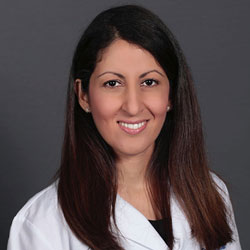 Ghadeer Thalji, DDS, PhD Success of dental implants requires the clinicians to understand the many factors that must come together to achieve long term outcomes. The lecture will explore the current scientific evidence on decisions related to the number of dental implants in various clinical scenarios of the partially and fully edentulous patients. Recorded - September 21, 2021
Ghadeer Thalji, DDS, PhD Success of dental implants requires the clinicians to understand the many factors that must come together to achieve long term outcomes. The lecture will explore the current scientific evidence on decisions related to the number of dental implants in various clinical scenarios of the partially and fully edentulous patients. Recorded - September 21, 2021 -
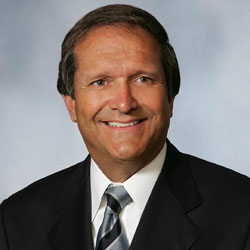 Roger Wise, DDS, MS The orthodontic profession has only recently focused its attention towards patient driven diagnosis and treatment planning. It is difficult to imagine practicing dentistry today without the utilization of dental implants. Smile esthetics can be very challenging or even compromised when implants are involved. In problem-oriented implant treatment planning the orthodontist may help establish a diagnosis that identifies possible improvement or even correction of hard and soft tissue. This lecture will also demonstrate how to establish occlusal and/or spacial relationships prior to implant placement. Recorded - March 31, 2021
Roger Wise, DDS, MS The orthodontic profession has only recently focused its attention towards patient driven diagnosis and treatment planning. It is difficult to imagine practicing dentistry today without the utilization of dental implants. Smile esthetics can be very challenging or even compromised when implants are involved. In problem-oriented implant treatment planning the orthodontist may help establish a diagnosis that identifies possible improvement or even correction of hard and soft tissue. This lecture will also demonstrate how to establish occlusal and/or spacial relationships prior to implant placement. Recorded - March 31, 2021 -
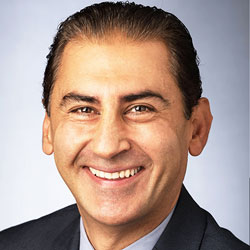 Ilser Turkyilmaz, DDS, PhD Implant-supported fixed dental prostheses improve the quality of life of edentulous patients experiencing functional and esthetic problems associated with complete dentures. CAD/CAM technology has recently revolutionized the field of implant dentistry. CAD/CAM surgical guides have greatly improved the predictability of implant surgery and the CAD/CAM fabrication of frameworks has resulted in elimination of distortion, better fit, fewer fabrication steps, and faster turn-around. All of these advancements offer improved experience for the patient, decreased treatment time, and greater accessibility. Basic clinical and laboratory procedures for restoring edentulous arches with CAD/CAM surgical guides and implant-supported fixed prostheses will be discussed. Recorded - January 11, 2021
Ilser Turkyilmaz, DDS, PhD Implant-supported fixed dental prostheses improve the quality of life of edentulous patients experiencing functional and esthetic problems associated with complete dentures. CAD/CAM technology has recently revolutionized the field of implant dentistry. CAD/CAM surgical guides have greatly improved the predictability of implant surgery and the CAD/CAM fabrication of frameworks has resulted in elimination of distortion, better fit, fewer fabrication steps, and faster turn-around. All of these advancements offer improved experience for the patient, decreased treatment time, and greater accessibility. Basic clinical and laboratory procedures for restoring edentulous arches with CAD/CAM surgical guides and implant-supported fixed prostheses will be discussed. Recorded - January 11, 2021

